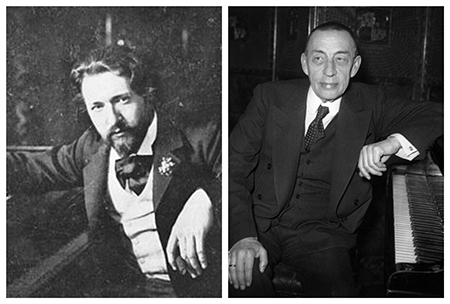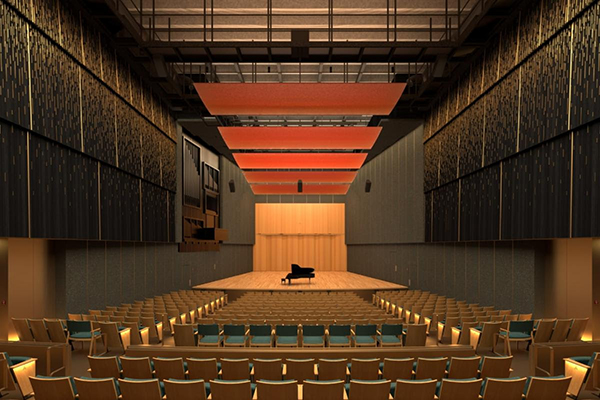On Thursday, March 28 during a CIM Orchestra concert, the Cleveland Institute of Music officially announced that its multi-purpose Kulas Hall will close for fifteen months beginning in May to undergo a complete $22 million renovation, the first since the hall was inaugurated along with the Institute’s new building in 1961.
A press release notes that “The project entails raising the ceiling some 30 feet to the roof deck, rerouting a complex network of ductwork, installing acoustical panels above the stage and acoustical banners throughout the hall, reshaping the side walls, and constructing an enhanced stage and orchestra pit.
“In addition, 460 new seats selected by CIM’s students, faculty, staff, and guests will be installed, along with new state-of-the-art theater lighting and technology.”
Read a Plain Dealer article by Steven Litt here.
TODAY’S ALMANAC by Mike Telin

Born in Empoli, Italy, Busoni revealed himself to be a pianist and composer of note at an early age. After holding several teaching positions he dedicated himself to writing music and touring. Also a musicologist, Busoni’s visits to the United States sparked his interest in the music of North American Indigenous people. In addition to the Piano Concerto, his transcriptions of works by J.S. Bach are legendary.
Prior to his 2019 performances of the monumental Piano Concerto with The Cleveland Orchestra, Garrick Ohlsson — who won the Busoni Competition in 1966 — told Clevelandclassical.com that during his lifetime, Busoni was a leading teacher, composer, and theorist as well as a great pianist. “People were drawn to him. He was in the middle of musical and artistic society. He taught in all sorts of places including the United States, Finland, and Russia — he was a true internationalist. But one of the problems with Busoni as a composer is that he’s very eclectic in his choice of language. If you see his name on the program, you don’t know if you’re going to have a tonal neoclassical, a completely atonal piece, or an overripe Romantic one like this.” Click here to read the preview.
Olhsson recorded Busoni’s five-movement concerto with The Cleveland Orchestra and Men’s Chorus under the direction of Christoph von Dohnányi in 1989. Click here for part one and here for part two.
Born in Semyonovo, near Novgorod in northwestern Russia, Rachmaninoff’s life and career are well-documented. What people may not know is that he had a long relationship with The Cleveland Orchestra. Rachmaninoff first came to Cleveland in 1923 to perform his second piano concerto at the Masonic Auditorium on March 29 and 31, an event that coincided with the 25th anniversary of Adella Prentiss Hughes’ reign as Cleveland’s musical impresario.
He returned in 1932 just after the Orchestra moved to Severance Hall, and four more personal appearances followed: November, 1937 (the Rhapsody on a Theme of Paganini), October, 1939 (Piano Concerto No. 1), March, 1941 (Beethoven Concerto No. 1 & the Paganini Rhapsody) and January, 1942 (Piano Concerto No. 2). The 1923 and 1932 engagements were led by Nikolai Sokoloff, the rest by Artur Rodzinski.
The January, 1942 Severance Hall concert also included his symphonic poem The Isle of the Dead (1907), and the recently composed Symphonic Dances, Op. 45. (1940). His return was highly anticipated. The Cleveland Plain Dealer, Cleveland Press, Cleveland News and Akron Beacon Journal, as well as local foreign language publications, all ran previews announcing the concerts.
How was the almost 69-year-old pianist’s performance of his concerto received by the local critics?
Plain Dealer critic Herbert Elwell wrote, “There was even more enthusiasm when Rachmaninoff appeared in the concerto. As usual he gave to his own music luster and animation that only his brilliant pianism can give it. And it was with evident pleasure that listeners heard from his own hands the drooping wistful melodies that have now reached the domain of popular music.”
However, Cleveland Press critic Arthur Loesser was unfavorably impressed by the tempos. “It must be said that much of Mr. Rachmaninoff’s performance was on the streamlined side, some of it even seemed to be functioning with a tailwind. Those of us who know this concerto pretty thoroughly had trouble recognizing our friendly note-figures in the rush.”
Loesser went on to say, “Great praise must be bestowed upon Dr. Rodzinski…for the highly skilled accommodation of his beat to Mr. Rachmaninoff’s frequent willfulnesses as well as for his success in keeping the occasionally heavy scoring in good balance.” Click here to read our “From the Archives” preview and here for our “What would Rachmaninoff post on Facebook” feature.

Click here for a concert from the New Orleans Jazz & Heritage Center on December 15, 2018 featuring Ellis Marsalis, Gerald Watkins, Jason Stewart, Andrew Bahan, and Derek Douget.
Click here to enjoy an evening of jazz and conversation with Bucky and John Pizzarelli — father-son virtuosos of the seven string guitar — recorded live in concert in 2014.



